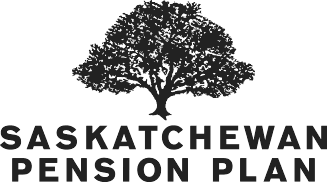May 12: BEST FROM THE BLOGOSPHERE
May 12, 2025

How much should you be saving for retirement – article sets out savings targets
When, back in the 1980s, a colleague explained what a registered retirement savings plan (RRSP) was, and why it was a good way to save for retirement, our starting point was signing up for $25 a month.
We didn’t think about how much we should be saving and just picked an affordable amount out of thin air.
According to an article by Erin Spaht, writing for WUSA, retirement savings works better with a bit of strategizing, and less randomizing.
Spaht begins by saying retirement savings (and planning) “can feel overwhelming at any stage, especially when you’re just starting your career.”
That’s why experts have set some benchmarks, the article continues.
According to investment firm T. Rowe Price, “by age 35, you should aim to save one and a half times your current salary for retirement,” the article notes. By 50, the article continues, you should have saved 3.5 times your salary, and by 60, “six to 11 times your salary.”
If you are younger than 35, save what you can, the article stresses. “Even a small amount over a long period of time can have a big impact on your end results,” Spaht notes.
There are a couple of other great tips in this article (we have Canadianized as needed):
- If your employer offers any kind of retirement program, be sure you have signed up for it and are contributing to the max. Often, your employer will chip in as well, and that’s “free money” for your retirement piggy bank.
- “Set up and make your retirement contribution automatic and pay yourself first each month. As you earn more, financial planners advise saving more.”
- Over 50, you should consider making “catch up” contributions to any retirement savings vehicle you are using, such as an RRSP or Tax Free Savings Account.
- Review your “investment allocations” once you are 60. “Experts say your investment strategy should typically be more conservative with less invested in stocks which can be volatile.” (Boy, can they ever be volatile!!)
- Stick to a budget.
- You’ll get a larger monthly income from government programs like the Canada Pension Plan and Old Age Security if you start them later than age 65.
The article goes on to note that many people have multiple retirement savings accounts – say three or four different RRSPs from time at different employers. Don’t forget about these older and often small accounts, the article notes.
“With so much job movement, people sometimes forget where their money is or how much they contributed,” notes Usha Rackcliffe of Emory University. Right now in the USA there are 30 million “unclaimed” retirement savings accounts, valued collectively at an eye-popping $1.6 trillion.
Members of the Saskatchewan Pension Plan can transfer any amount from another non-locked-in RRSP to their SPP account. That’s a way of consolidating little bits of pension savings into a single, larger savings nestegg. And with SPP’s professional, low-cost investing, that pot of savings will grow while you work. At retirement, you’ll have options such as a monthly annuity payment for life or the more flexible Variable Benefit.
Check out SPP today!
Join the Wealthcare Revolution – follow SPP on Facebook!
Written by Martin Biefer

Martin Biefer is Senior Pension Writer at Avery & Kerr Communications in Nepean, Ontario. A veteran reporter, editor and pension communicator, he’s now a freelancer. Interests include golf, line dancing and classic rock, and playing guitar. Got a story idea? Let Martin know via LinkedIn.

Previous Post:
May 8: Your empties can help local charities
Next Post:
May 15: Effortless Frugality: how to save money and help the environment